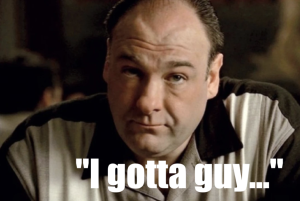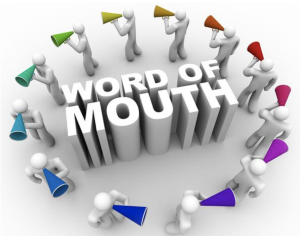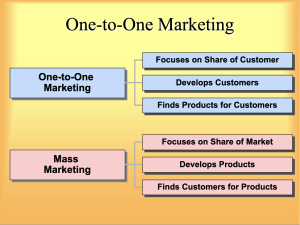 Last week, I received an email from a person I know………talking about how Word of Mouth (WOM) MARKETING is more effective than Paid Advertising. Of course this person wasn’t targeting ME, specifically, or I’m guessing that she wouldn’t have included me. I was part of a ‘blanket’ email blast that was sent-out to EVERYONE in her Network……..which is a whole separate conversation that we’ll address in a different post.
Last week, I received an email from a person I know………talking about how Word of Mouth (WOM) MARKETING is more effective than Paid Advertising. Of course this person wasn’t targeting ME, specifically, or I’m guessing that she wouldn’t have included me. I was part of a ‘blanket’ email blast that was sent-out to EVERYONE in her Network……..which is a whole separate conversation that we’ll address in a different post.
Besides the fact that her email made it into my JUNK Folder <ironically>, I took some offense since I’ve made my living (for the past 30 years) in the Advertising World.
But, being the open-minded person that I am, I decided to do some research on this topic and found some interesting stats.
What is Word of Mouth Marketing?
By definition, word-of-mouth marketing is free and accessible by any business.  This makes it one of the most common forms of promotion. People are happy to share their experience with goods or services – either online or face-to-face, either positive or negative.
This makes it one of the most common forms of promotion. People are happy to share their experience with goods or services – either online or face-to-face, either positive or negative.
The word-of-mouth marketing statistics in 2021 reveal its great influence. Why is that? What makes word of mouth marketing so important?
It’s all about the driving force – the people. There’s nothing more powerful to us than our own experiences, right?
***Yes – it IS the most cost-efficient form of marketing, but (for the most part) it’s a One-to-One form of communication VERSUS a One-to-MANY……… like advertising does.***
Fascinating Facts
- Being one of the most trusted channels, WOM marketing is key when it comes to decision making.
- 92% of consumers trust recommendations from friends.
- 74% of consumers identify word of mouth as a critical influencer in their purchasing decision.
- 88% of customers trust online reviews.
- 64% of marketing executives consider word-of-mouth to be the most effective form of marketing.
- Brands that are able to create an emotional connection receive three times more word-of-mouth than those that don’t.
 Those were the ‘positives’ – now here are the ‘negatives of WOM.
Those were the ‘positives’ – now here are the ‘negatives of WOM.
1. Loss of revenue
According to Womply research, bad reviews on Google, Facebook, and Yelp have a significant effect on your revenue. A business with a 1-1.5star rating reports 33% less revenue than the average enterprise. Forbes reports that 94% of consumers avoid a company with bad reviews.
2. Undermine business reputation
Negative reviews have the power to damage the reputation you have built for years. They make potential customers trust your business less. Many people do not purchase from a store with a bad reputation and questionable credibility. 50% of consumers question the quality of a company with negative reviews. Abundant negative reviews are hard to fix, making it challenging to regain consumers’ trust.
3. Drive customers away
Negative reviews succeed in chasing away customers from your business to your competitors. Research shows that one negative review drives away 22% of prospects, around 30 customers. The percentage of lost customers increases with an increase in negative reviews. Three negative reviews drive away customers by 59.2%. More than four negative reviews increase your lost customers to 70%.
4. Low search engine ranking
Review ratings affect the way your business ranks on search engines. Negative ratings make your business to rank poorly because search engines recommend the best enterprises to users.
5. Decrease profitability
Negative reviews decrease your profitability by driving away customers and decreasing your revenue. Also, the cost of rectifying your tarnished reputation takes a toll on your profitability.
6. Control
Another drawback of word of mouth marketing is that businesses have little control over when and how it occurs. Lack of control makes it difficult for a company to increase word of mouth marketing: Customers are free to choose whether they tell friends and family about their experiences. And word of mouth marketing is not always positive. Customers with bad experiences can spread negative sentiments about businesses that can discourage potential customers from trying goods and services.
7. Expectations
Word of mouth marketing can give consumers expectations about products that may be difficult to meet. A highly positive recommendation from a friend might persuade a consumer to try a product, but if the product doesn’t live up to his expectations, he may be disappointed. Consumers with no prior knowledge of a company and no expectations are more likely to be satisfied when they try new products or services than those coming in with unrealistically high expectations.
So What is Paid Advertising?
 Advertising establishes a one-way channel of communication, where companies can broadcast non-personal messaging to a general audience. Unlike other types of marketing or even public relations, companies have total control over advertising. When a company pays to place an ad, it has complete control over how the content involved is promoted.
Advertising establishes a one-way channel of communication, where companies can broadcast non-personal messaging to a general audience. Unlike other types of marketing or even public relations, companies have total control over advertising. When a company pays to place an ad, it has complete control over how the content involved is promoted.
There are countless benefits to a successful advertising campaign. In common practice, businesses can leverage advertising to:
- Educate customers on the nature of products or services
- Convince customers that products or services are superior
- Improve customer perception of brand or culture
- Generate customer need or want for products or services
- Exhibit new applications for products or services
- Publicize new products or services to potential customers
- Attract new customers to purchase products or services
- Retain the existing customer base
BOTTOM-LINE?
You should be doing – BOTH
But to rely on ONE instead of a media-mix of Marketing and Advertising is a HUGE mistake.

 317-289-4965
317-289-4965